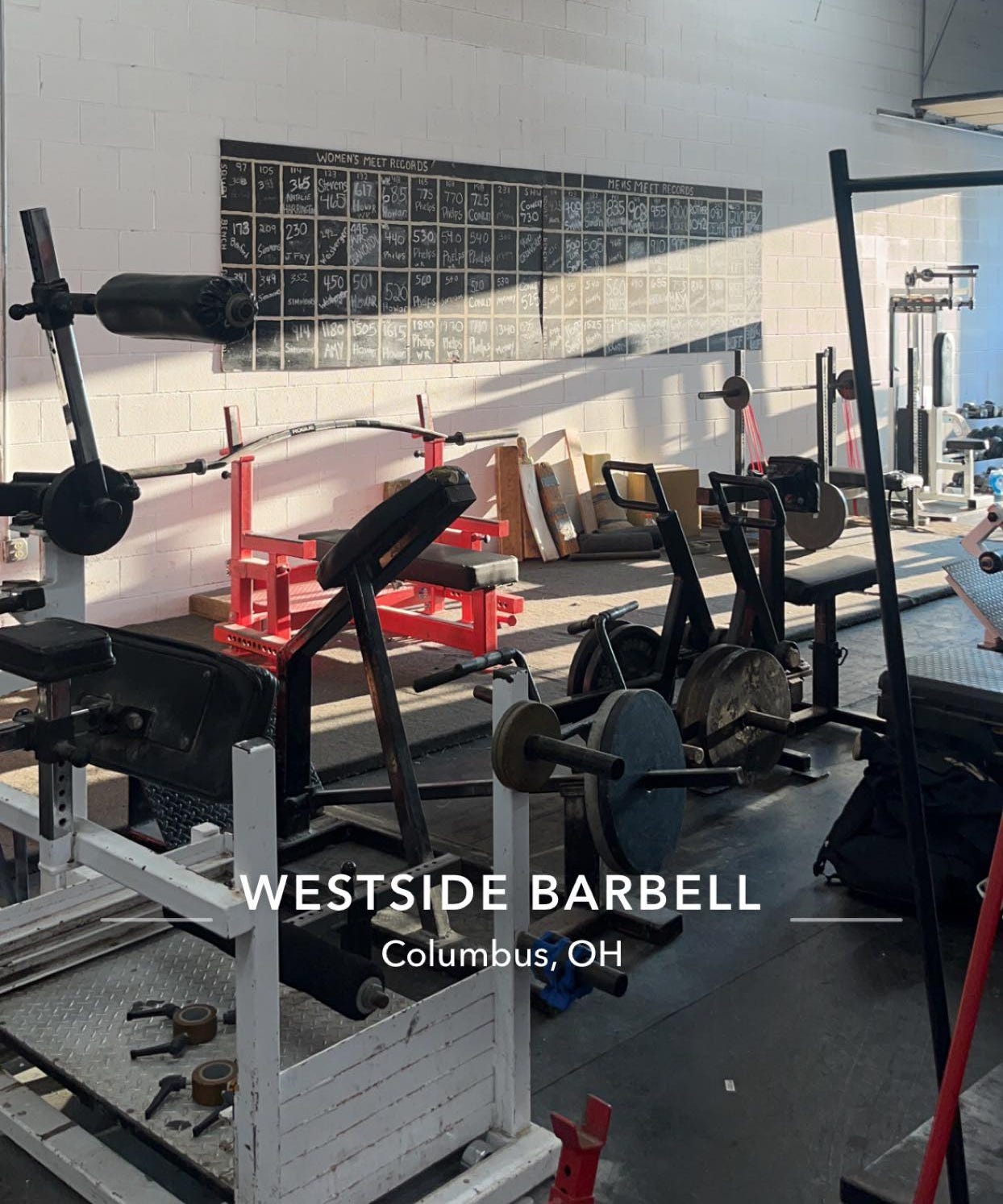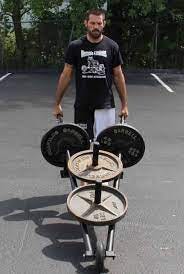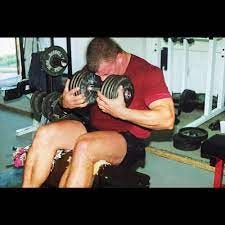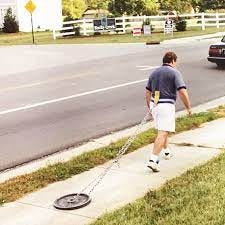This last weekend I traveled to Westside Barbell to attend their first conjugate method seminar. There were several takeaways I had from the seminar and I wanted to share them in this post. For those that don’t know, Westside Barbell is a legendary gym in Columbus Ohio that has produced many powerlifting world record holders. However, most of the athletes at Westside are not powerlifters, over 90% are from other sports like track and field, MMA, or rugby.
There are many ways to run a conjugate system and although Westside is conjugate, not all conjugate programs are Westside. Keep this in mind through this article, I have never trained at Westside and much of what they do is highly individualized for their athletes.
Takeaways From The Seminar
1.) I’m not training hard enough.
After carrying the war wagon around the building (took me 2:39) Mac told me the fighters would immediately go into jumps and accessory work, no rest. The way these guys push the pace is unreal and is something I have been doing immediately with my training since I got back to the gym. Having adequate rest is important to maintain output during your sets, however pushing GPP and my general conditioning at the moment is also paramount to increase my performance for kickboxing.
I use even shorter rest periods and superset a couple more movements into training to specifically target weak points like the upper back, triceps, and hamstrings.
2.) It does you no good to be strong in the wrong exercises
This is a point I’ve known and believed in but haven’t really stuck to myself as much. Experiment with movements and find what works best for you. Progressing that movement is then important. If weighted dips help your bench, pick an exercise to do as an accessory that elevates your dips. Training is exploring and learning, you should never stop learning what works for you and your clients.
3.) Perform high rep floor ab work at least once a week
This was a tip that came from Laura Phelps (world record holder). Doing sets of 15-25 with 2 to 4 ab movements can be beneficial to strengthening the core in the long term. The core should be trained like any other muscle group, load the core movements whenever possible. Having good endurance and being able to tolerate high repetitions is important for the core just like any other muscle group. Become fatigue resistant in all parts of your body.
4.) Jump More
40 jumps a day twice a week is the goal to increase speed and power. I was currently doing about 25 jumps twice a week. Jumps can also be included in mini workouts throughout the week or as a warm up for upper body days to split the volume more evenly across the week. Jumps should also be changed by using different variations and weight loading methods like dumbbells, ankle weights, or bands.
5.) Live and die on the sled
One statistic that immediately jumped out was that Westside observed 70% more injuries when sled volume was decreased. That’s substantial. Sled training was not a huge part of my program but I’m looking forward to adding more extensive sled training into my warmup and mini workouts. You can do both upper and lower body movements with the sled. The sled is a concentric only movement so it;s a great tool for recovery. It won’t bang up your joints or make you too sore, allowing you to increase work capacity while minimizing injury or over training risk.
6.) Assess training with an 11-week cycle
The 11 week cycle involves testing in the first week, three 3-week conjugate waves, and then testing on the last week. The cycle allows enough time to determine whether the accessories and primary movements being used are effective. If a PR isn’t achieved on the test week or during the 9 weeks on max effort days, then either volume was too low, training wasn’t challenging, or different movements need to be selected.
Training should be hard, we often lose sight of it as coaches when we get too far into the weeds with the science. At the end of the day, it’s about stress and adaptation. Don’t let the sets, reps, and numbers get in your way. They’re a great guide, but you will need to individualize the volume to your specific needs and goals. Don’t be afraid of working too hard, the body is highly resilient.
Strong is Strong, see you guys next week.







